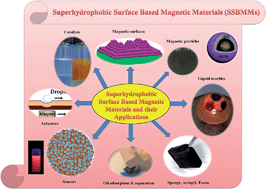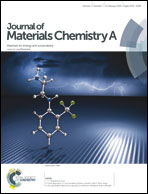Emerging trends in superhydrophobic surface based magnetic materials: fabrications and their potential applications
Abstract
Superhydrophobic surfaces have become an emerging field over the last few decades. Recently, these surfaces have attracted considerable attention in a wide variety of applications due to the smart and self-cleaning ability of the surface. On the other hand, the switchable surface properties, self-healing and robust mechanism for mechanical abrasion make these superhydrophobic surfaces more reliable for practical applications and commercialisation in coating industries. More recently, superhydrophobic surfaces induced by magnetic fields or magnetic particles have also emerged as a new area for a range of applications, such as oil spill capture and separation, catalysis, sensors, liquid marble type microfluidic devices, magnetic resonance imaging (MRI) contrast agents, and superhydrophobic magnetic fluids. This review covers the fabrications of superhydrophobic surface based magnetic materials (SSBMMs), such as superhydrophobic magnetic surfaces, nanoparticles, liquid marbles, sponges and foams, bulk materials, aerogels, fabrics and papers, elastomer actuators, micro-fluids, anisotropic particles (tri-patch magnetic supraparticles), and their past, present and future applications.



 Please wait while we load your content...
Please wait while we load your content...